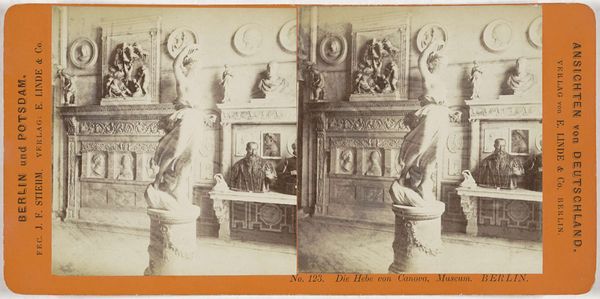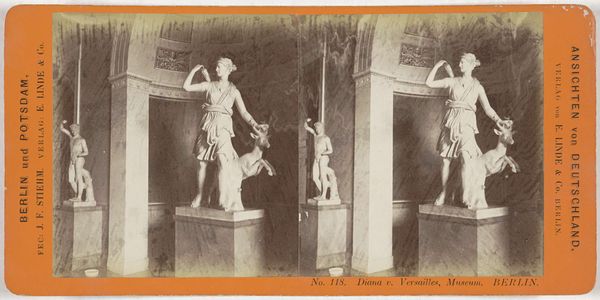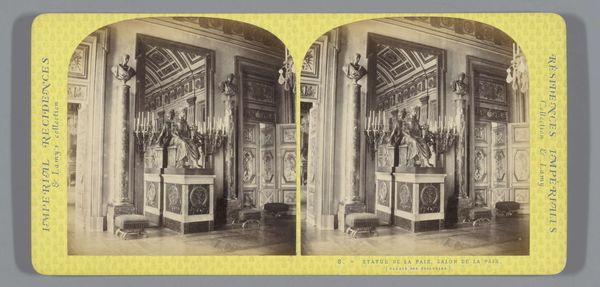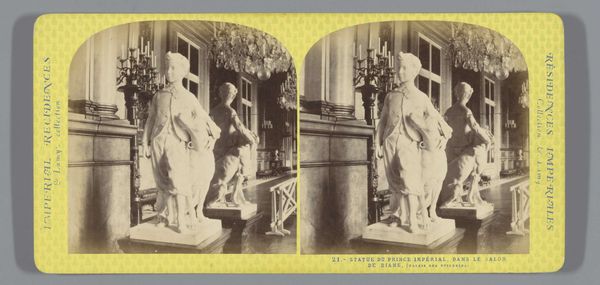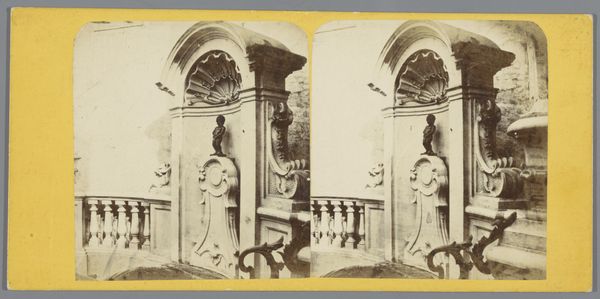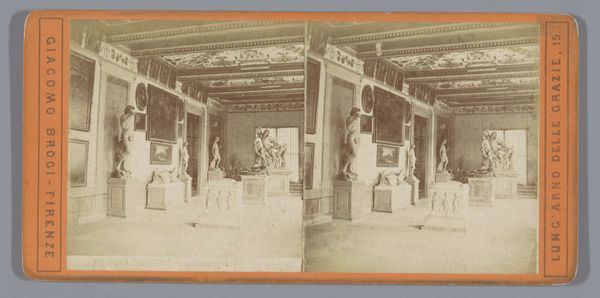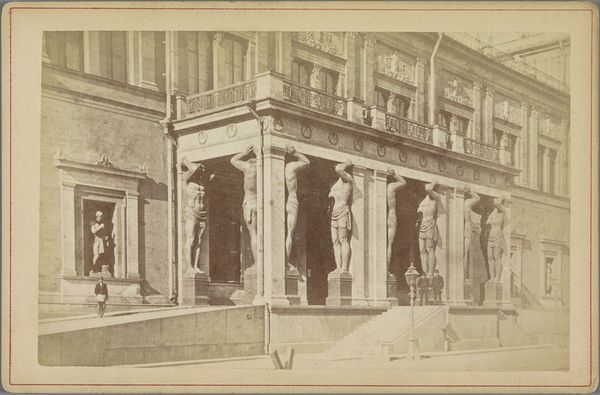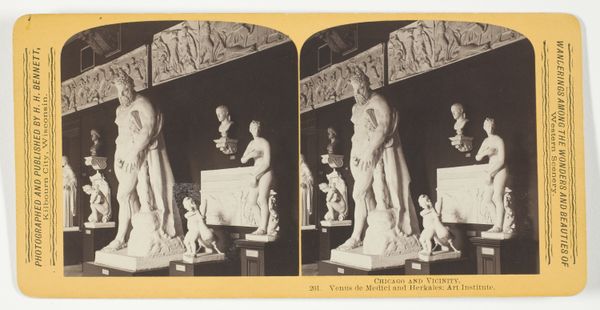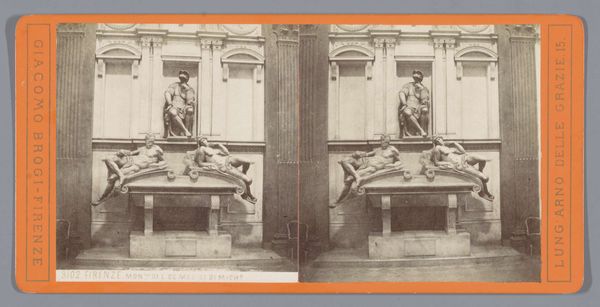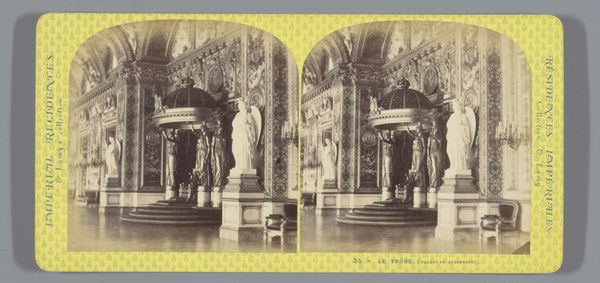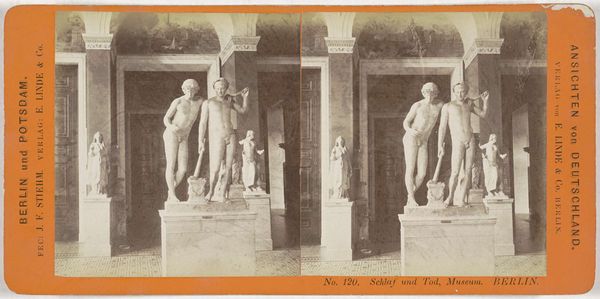
print, photography, sculpture
#
portrait
#
water colours
# print
#
greek-and-roman-art
#
photography
#
coloured pencil
#
sculpture
#
realism
Dimensions: height 86 mm, width 176 mm
Copyright: Rijks Museum: Open Domain
Curator: Let's discuss this striking stereo photograph titled "Één van de Dioskouren, Neues Museum, Berlijn," dating from between 1868 and 1870, credited to Johann Friedrich Stiehm. It depicts a sculpture of one of the Dioscuri, the divine twins from Greek and Roman mythology. My first impression is its starkness. The subdued tone really highlights the form of the statue and its intricate details, standing with a horse beneath neoclassical architecture. Editor: That initial starkness you describe hits me too. It feels so detached from the potential narrative power it could hold; it's almost clinical. We see this attempt to present history, and particularly Greco-Roman history, in a certain light... Curator: I see that point completely, and find it crucial to unpack the labor involved. Look closely, it is after all just a photograph. Printed commercially, meant for wide distribution. What material processes did Stiehm employ to translate a three-dimensional marble sculpture, itself the result of many hours of crafting, into a mass produced image? Editor: It’s so crucial that we bring the concept of "mass production" into the context. Stiehm’s work makes me consider access to art during this period and how it impacted different socioeconomic classes. These Dioscuri figures aren’t simply aesthetic forms, these heroes symbolize power, beauty, idealized masculinity, things the patriarchy promotes. Curator: You make me wonder: What does it mean to circulate images of supposedly timeless "beauty" amidst industrializing societies with entirely new modes of making and distribution? Does it suggest art's potential obsolescence, or its adaptability? It does invite conversation. Editor: Absolutely. It compels us to question whose gaze is being centered. Who could purchase, own, and consume such images? Who felt excluded or misrepresented by them? How does such imagery reinforce existing hierarchies around class and gender? I believe it is essential to analyze not just what is being presented, but also what’s omitted. Curator: Very much to the point. Examining Stiehm's work here has reminded me to examine art and photography with more material and social awareness. We are examining the cultural object, it's creation, and its many reproductions for different socioeconomic stratospheres. Editor: And I see clearly how understanding context opens up deeper explorations of the intertwined aspects of production and power, representation and resistance.
Comments
No comments
Be the first to comment and join the conversation on the ultimate creative platform.
